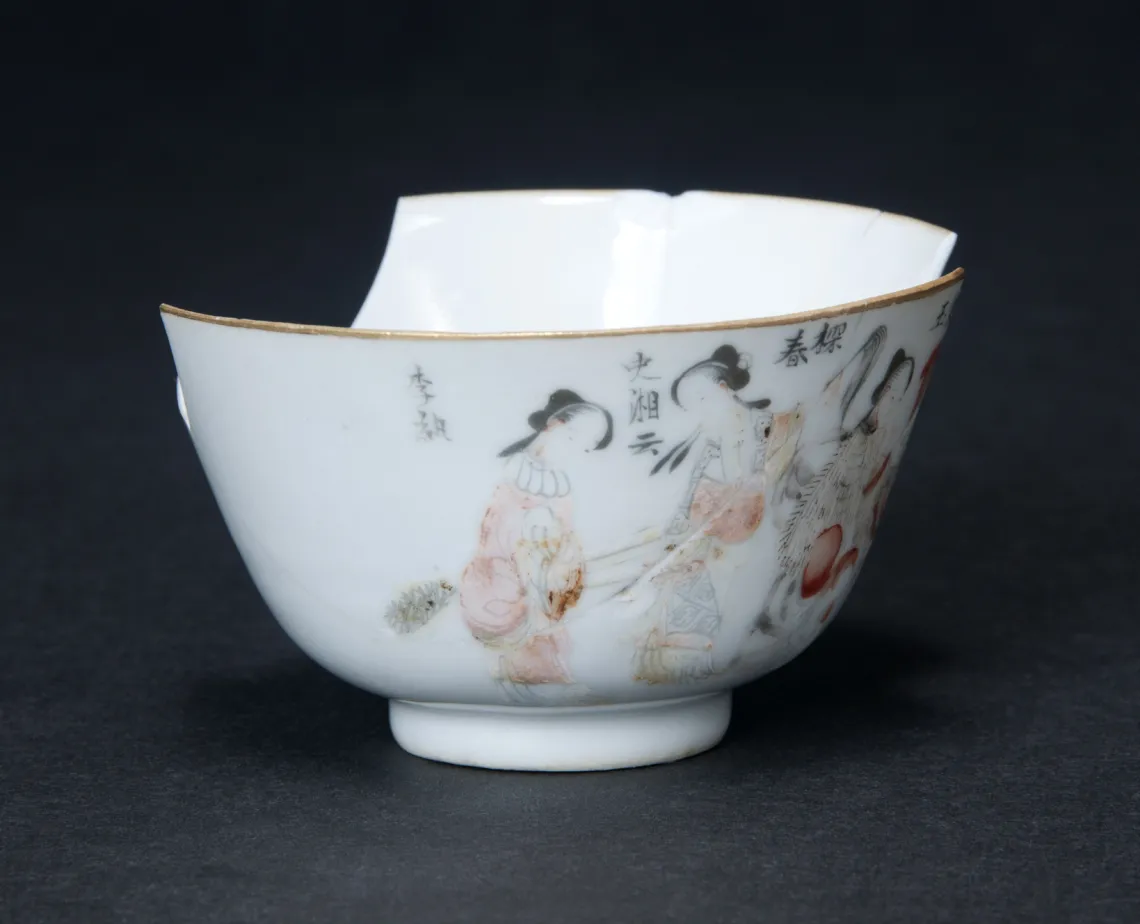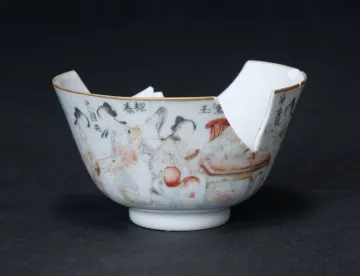
Chinese Tea Cup Found in Tucson
ca. 1862–1873 C.E.
Chinese
Tucson Urban Renewal Project, Block 20
Downtown Tucson
Porcelain
Height: 2.4 in. (6.0 cm.), Maximum diameter: 3.9 in. (9.9 cm.)
ASM Tucson Urban Renewal Project,
James E. Ayres, Director, late 1960s
(ASM Catalog No. A-50771)
What do one of China’s most famous and beloved historical novels and the Tucson Urban Renewal Project have in common? This small, Chinese porcelain tea cup is decorated with scenes from The Story of the Stone (also known as The Dream of the Red Chamber). Written ca. 1760 by Cao Xueqin (ca. 1715/1724–1763/1764), an impoverished member of a formerly wealthy and influential clan, it tells the story of the rise and fall of a family whose history resembles his own. The novel’s influence and popularity arises, in part, from its emphasis on female characters and its detailed descriptions of daily life during the Qing Dynasty. Decorative motifs from the book are often found in other artistic media.
The tea cup was collected by the museum’s Tucson Urban Renewal Project (TUR), directed by archaeologist James E. Ayres, in the late 1960s. It was excavated from a trash-filled privy pit in TUR Block 20, a block formerly bounded by Mesilla Street, Main Avenue, Broadway Boulevard, and Meyer Avenue, approximately where the Hotel Arizona is now located, at 181 West Broadway. We don’t know with certainty just how and when the cup reached Tucson. However, Ayres’s archival research has shown that some Chinese were present in Tucson by the early 1870s, engaged in small businesses including cafés, laundries, stores and vegetable gardening, and forming a distinctive element of the multicultural community. Sanborn fire insurance maps show several Chinese businesses on TUR Block 20 from 1904 until 1919.
We selected this little tea cup because it illustrates a number of important themes: the use of collections by students; the use of collections in novel, cutting-edge scientific research; and the relevance of ASM’s collections in helping to tell the story of one of the immigrant groups that make up the diverse cultural mosaic of Tucson and Arizona.
References
Cao Xueqin
- The Story of the Stone. Five Volumes. Translated by David Hawkes and John Minford. Penguin Books, London, 1973–1980
Lister, Florence C., and Robert H. Lister
- 1989 The Chinese of Early Tucson: Historic Archaeology from the Tucson Urban Renewal Project. Anthropological Papers of the University of Arizona No. 52. University of Arizona Press, Tucson.






